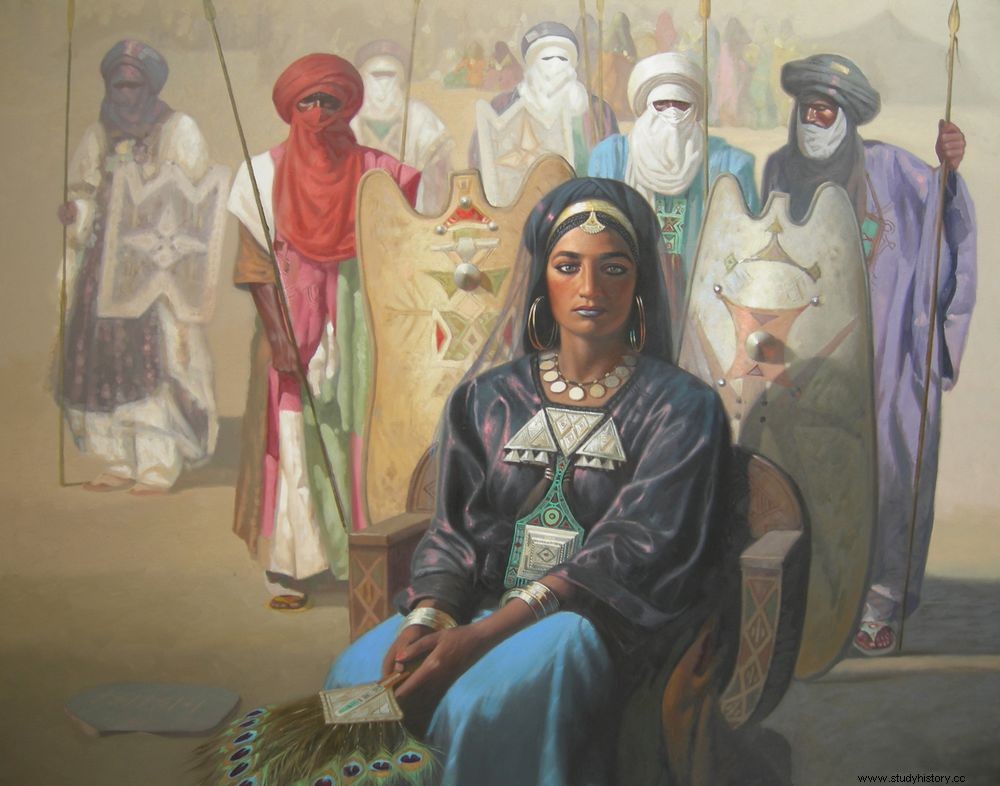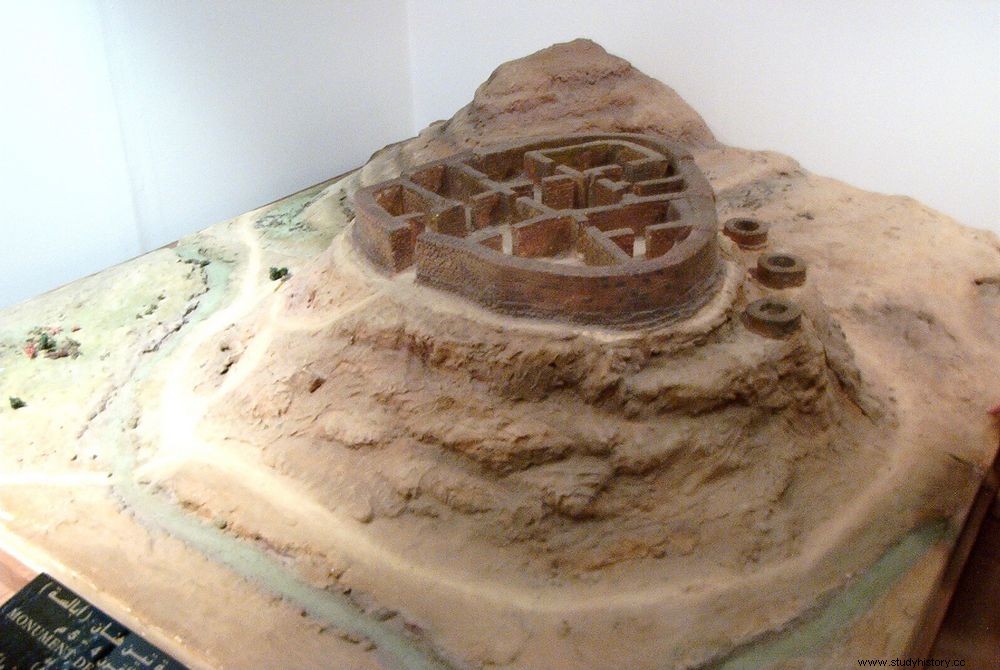Berber queen of the 4 th century, Tin Hinan is considered by the noble Tuaregs of Hoggar (in Algeria) as their mother founder. It is known mainly through oral tradition, with sometimes contradictory versions that leave a great deal of mystery.
The one who comes from afar

Oral tradition says she is tall, charismatic and beautiful, with large eyes, a fine nose, a luminous complexion and a perfect face. The name that remains of her is probably more of a nickname, linked to her history. In Tamasheq, a Tuareg language spoken south of the Sahara (current Mali and southern Algeria), its name would indeed mean "the one who comes from afar", "the one who moves" or even "that of the camps".
According to the stories, Tin Hinan would indeed come from the Berbers of Tafilalet, a region in the south-east of present-day Morocco at the gates of the Sahara. For some unknown reason, she leaves her native land in the company of her servant, Takamat, and crosses the Sahara. It is likely that the two women traveled with mounts and beasts, perhaps also other travellers, to face the dangers of the desert. They probably know how to orient themselves thanks to the stars and decipher the route of a road, like the very old "road of the chariots" drawn on cave paintings in the Sahara, and which mentions rivers and oases.
Tin Hinan stops at Abalessa in the Hoggar, a mountain range in the heart of the Sahara, in places previously occupied. She sets up her tents there, establishes a camp, develops commercial relations with the travellers; it is called tamenokalt , a title designating the sovereign of a Tuareg confederation. Oral tradition lends him one or more children:three girls, Tinert (meaning antelope), Tahenkot (gazelle) and Tamérouelt (hase). Tin Hinan is considered by the noble Tuaregs of Hoggar as their ancestor, while Takamat would be that of the non-noble Tuaregs.
The Tomb of Tin Hinan?

In 1925, archaeologists discovered a female tomb in Abalessa, which they attributed to Tin Hinan – although the attribution was not unanimous among the Tuaregs – and which is now a place of tourism. The burial includes a skeleton, gold and silver jewellery, a Roman lamp, funerary furniture and coins bearing the effigy of the Roman Emperor Constantine – issued in the 4 e century. The female skeleton is large and her pelvis is narrow, which, according to ethnologist Marceau Gast, would tend to show that this woman was nulliparous:she had no children.
Examination of the skeleton also reveals that the woman suffered from lumbarthrosis, a wear and tear on the vertebrae that was probably causing her to limp. A detail that can be compared to the stories of the historian of the 14 th century Ibn Khaldoun:in The Book of Examples , he reports that the Tuaregs of Hoggar also call themselves "children of Tiski", nicknamed "Tiski the lame".
Many mysteries remain regarding the existence of Tin Hinan; however, she remains in the memories of the noble Tuaregs of Hoggar as "our mother to all".
Useful links
Tin Hinan wikipedia page
Tomb of Tin Hinan
Women in the shadows:Tin-Hinan, queen of the Tuaregs
New testimonies on Tine Hinane, legendary ancestor of the Tuareg Ahaggar
